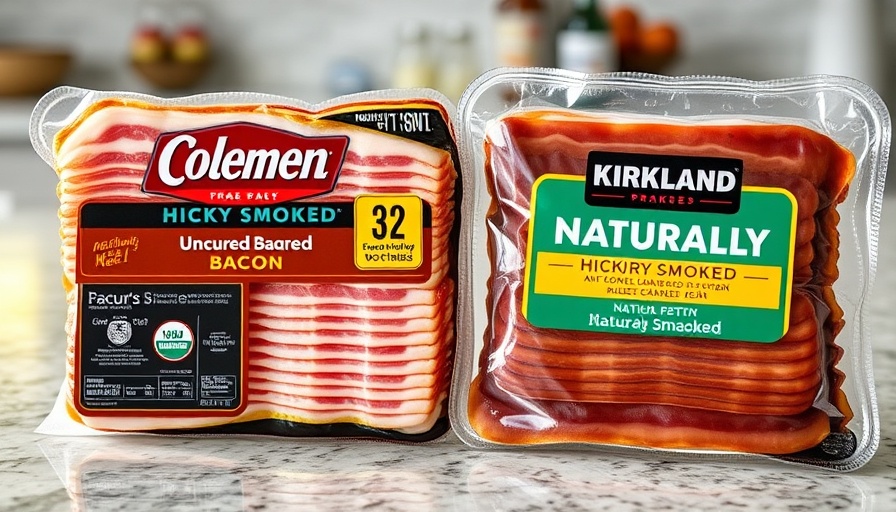
Exploring America’s Culinary Diversity through Global Flavors
When it comes to experiencing the world through food, few places illustrate this more vibrantly than America’s most diverse foodie cities. A recent ranking by the Auguste Escoffier School of Culinary Arts analyzed 46 different global cuisines across 38 prominent U.S. cities. This effort not only emphasizes the variety of culinary choices available but also how easily these flavors can be accessed, quintessential for anyone keen on exploring diverse culinary practices.
What Measures Culinary Diversity?
To determine which cities topped the list of diverse foodie options, researchers analyzed a combination of data. They used the Shannon Diversity Index, which computes a score based on cuisine variety and restaurant access, utilizing resources like the 2020 U.S. Census and Tripadvisor reviews. This method promotes an understanding of both the abundance and accessibility of global flavors in each city, something essential for diners who value nutritious options.
The Top Cities Brimming with Flavors
Let’s take a closer look at the cities that embody culinary diversity, perfect for those looking to enhance their health while enjoying delicious meals.
San Francisco: A Flavor-Packed Experience
Ranked at the top with a perfect score of 100, San Francisco is a hub of global cuisine. Its compact size allows food lovers to sample a variety of healthy options, with more than 2,700 restaurants nestled within just 47 square miles. This density allows individuals trying to lose weight to find fresh, healthy options infused with global flavors without straying far from home. By enjoying dishes that range from nutritious salads to energy-boosting dishes, you can savor the culinary spectrum efficiently.
New York City: The Big Apple of Culinary Delights
In second place with a score of 92.58, New York City boasts the largest number of restaurants in the country. Spanning across five boroughs, this city provides a tapestry of flavors pulled together by generations of immigrant influence. Those focused on wellness can find a variety of clean-eating options—ranging from wholesome grain bowls to tantalizing low-calorie treats. The extensive cultural enclaves make it a playground for discovering nutritional gems that do not compromise on taste.
Seattle: West Coast Wonder of Taste
Seattle secured third place with a score of 91.69 and displays an impressive array of global flavors. The city’s food scene reflects a blend of multicultural influences that cater to health-conscious eaters. You can easily seek out nutritious options like fresh seafood and plant-based meals, making it an ideal location for anyone wanting to engage in a fulfilling and health-conscious dining experience. Seattle emphasizes the importance of sustainability and clean eating with its innovative eateries.
The Value of Culinary Diversity for Healthy Eating
Why should we care about the diversity of food options available in our neighborhoods? For individuals pursuing weight loss and improved well-being, diverse culinary options can enhance diet quality. Many nutritious ingredients from various cuisines provide beneficial nutrients that promote fat burning and overall health. For instance, Mediterranean salads rich with olive oil, spicy Thai curries bursting with vegetables, and protein-rich Mediterranean bowls collectively create an array of nutrients beneficial for healthy lifestyles.
Future Tastes and Health Benefits
As awareness grows regarding the importance of healthy eating habits, these cities can serve as a map for culinary exploration. Food lovers should take inspiration from these diverse dining scenes to make informed decisions that cater to both their palates and their health goals. Embracing global flavors opens the door to a variety of cooking techniques and ingredients that can be tweaked to enhance personal health.
Connect with the Culinary Community
Whether you are passionate about cooking or looking to explore new dining options, immersing yourself in these diverse food landscapes can lead to rich discussions and connections. By participating in local culinary events or trying out community cooking classes, individuals can further their skill sets while discovering nutritious, delicious food tailored to their preferences.
Ultimately, with the delicious experiences ahead, don’t hesitate to embrace the culinary diversity presented in your local foodie scene. With so many options available, the journey to a healthier lifestyle can begin plate by plate.
Take Action: Dive into your local foodie offerings and explore a new dish this week. Remember, each bite can carry flavors from across the globe and be a step toward a healthier you.
 Add Row
Add Row  Add
Add 







Write A Comment